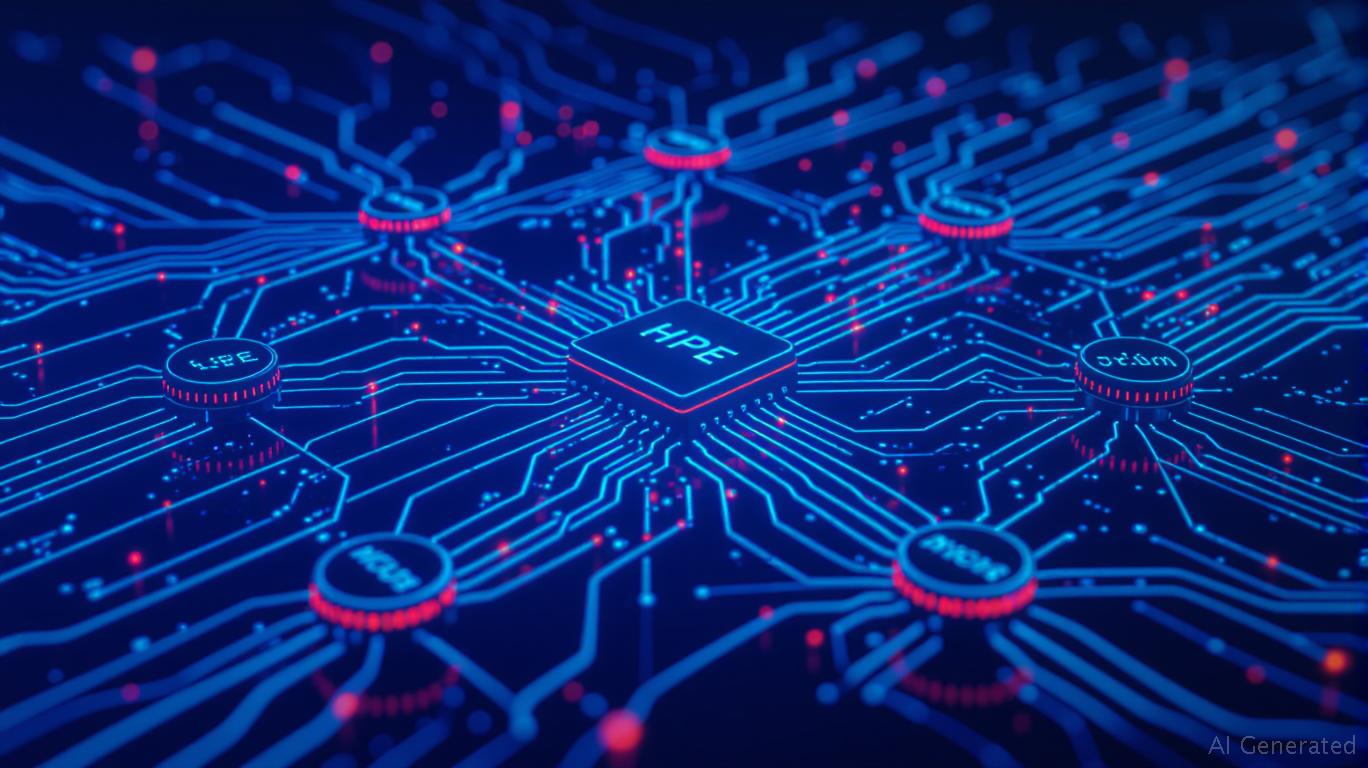HPE's Juniper Acquisition: A Bold Move to Capture the AI Networking Frontier
The U.S. Department of Justice's approval of
Enterprise's (HPE) $14 billion acquisition of Juniper Networks on June 28, 2025, marks a pivotal moment in the evolution of enterprise networking. By combining HPE's infrastructure prowess with Juniper's advanced software-defined networking (SDN) and artificial intelligence (AI) capabilities, the deal positions the merged entity as a formidable contender in the rapidly growing AI-driven networking market. For investors, this merger signals a strategic play to dominate a sector where hybrid cloud adoption, AI workloads, and data complexity are reshaping demand.Strategic Synergies in AI-Driven Infrastructure
The core of this deal lies in merging HPE's data center and storage expertise with Juniper's leadership in network automation and AI-native solutions. Juniper's Mist AIOps platform, which autonomously optimizes networks using machine learning, is a crown jewel in this transaction. HPE's CEO Antonio Neri emphasized that the combined company will deliver “modern network architecture alternatives for AI demands,” directly addressing a critical gap in enterprise IT: the need to manage exponentially growing data volumes and real-time decision-making required for AI applications.
While
Market Positioning: Filling the Hybrid Cloud and AI Void
The global networking market is at an inflection point. Enterprises are moving away from siloed hardware and toward agile, AI-optimized systems that can handle hybrid cloud environments. Juniper's software expertise and HPE's edge computing and storage infrastructure form a compelling stack for this transition. For instance, combining HPE's GreenLake cloud services with Juniper's Contrail SD-WAN and Mist AIOps could create a unified platform for companies deploying AI models across distributed sites.
Antitrust concessions, such as divesting HPE's Instant On branch business, were a necessary trade-off to secure regulatory approval. This move, while diluting some near-term revenue, underscores the strategic focus on high-margin AI and software opportunities. The divested business, likely acquired by a competitor or private equity firm, removes overlap that could have stifled innovation.

Growth Catalysts and Risks
The merged entity's success hinges on three factors:
1. Execution Speed: Rapid integration of Juniper's software into HPE's product roadmap to capitalize on AI's rising demand.
2. Competitor Response: Cisco and VMware (VMW) are also expanding into AI networking, so HPE must move swiftly to establish differentiation.
3. Cost Savings and Innovation Investment: The $14 billion price tag requires cost synergies to offset debt while reinvesting in R&D for AI-native solutions.
Investors should monitor signs of progress, such as new joint product launches, customer case studies in AI workloads, and revenue growth in software segments. The $40-per-share cash offer also reflects HPE's confidence in the deal's value, but shareholders must ensure the post-divestiture balance sheet remains stable.
Investment Outlook: A High-Reward, High-Risk Bet on the AI Future
For long-term investors, HPE's acquisition represents a bet on the convergence of networking and AI. The merged firm's ability to offer end-to-end AI infrastructure could carve out a niche in markets where competitors are still playing catch-up. However, execution risks are significant: integration challenges, regulatory scrutiny beyond the DOJ's settlement, and the intense competition in software-defined networking could limit upside.
Bullish investors might consider HPE as a “build-to-suit” play for the AI era, while cautious investors may prefer waiting for clearer signs of synergy realization. The stock's valuation, currently trading at 6.5x expected 2025 revenue, leaves room for multiple expansion if the merger drives margin improvements.
In conclusion, HPE's acquisition of Juniper is less about cost-cutting and more about building a future-proof technology stack for AI. For investors willing to take on the risks, this could be a foundational holding in a portfolio betting on the next wave of enterprise IT transformation. The next 12–18 months will reveal whether HPE can turn this strategic vision into tangible growth—and whether the market is ready to reward it.
Data queries and visualizations can be generated using financial APIs or tools like Bloomberg Terminal for real-time insights.

Comments
No comments yet